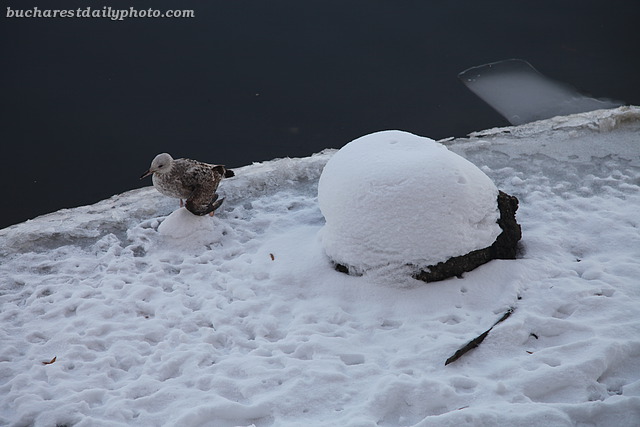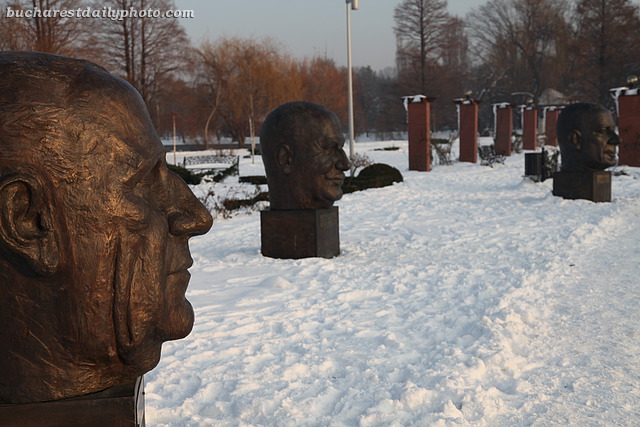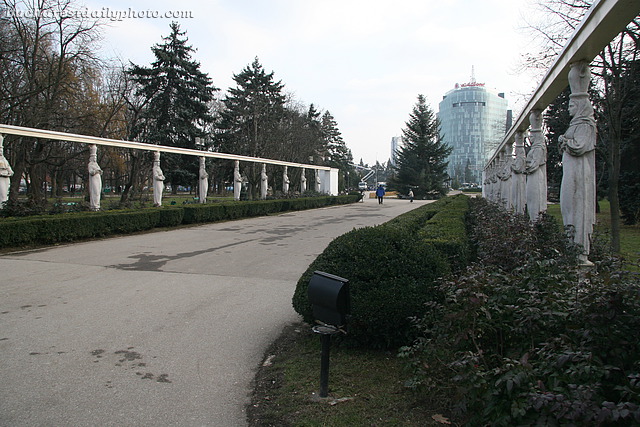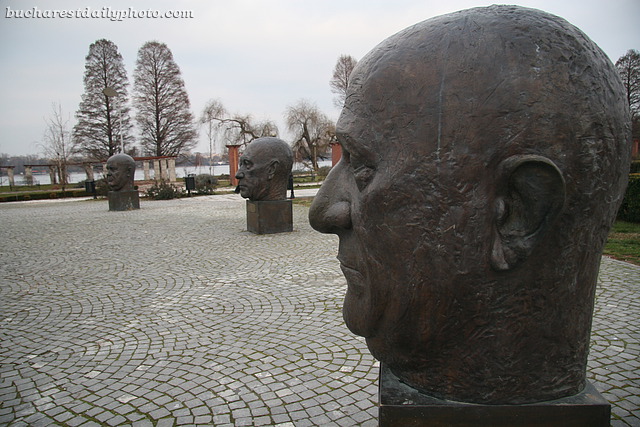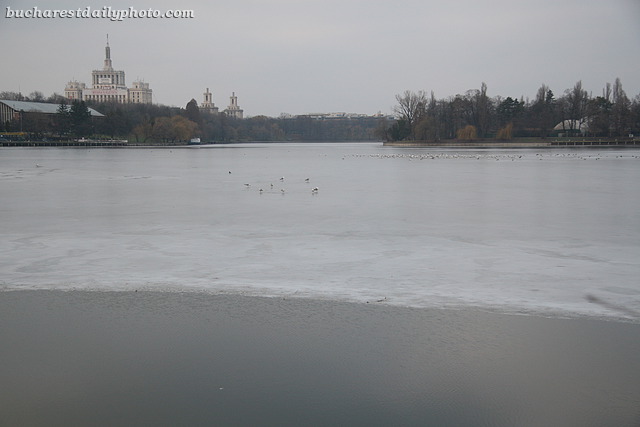A new addition to “reflections” series: the two tower buildings erected at the entrance to Romexpo complex and the House of the Free Press reflected in Herăstrău lake. To see all the reflection photos click here.
… in Herăstrău Park. Not as big as the name would have you believe but most likely perceived as huge by the little ones.
Finally. The sun is out today after four days of depressing grey skies. I hope all weekend’s going to be sunny, same as it was last weekend when I took a stroll through Herăstrău park and shot the photos that I’m posting today.
Because one of the photos from the “Winter in the park” series has raised some questions I decided to show the entire work of art that contains that statue, work that was clipped by my framing. The ensemble is called “The Alley of the Cariatides” by Constatin Baraschi (November 17, 1902 – March 22, 1966) and consists of two strings of 10 statues on each side of the alley. The statues represent Romanian peasant women, dressed in traditional clothing and carrying an amphora on their heads. There are two types of statues and they are differentiated by the position of their hands. The work was unveiled in 1936 but what we see today is not the original, which was destroyed during communism to make space for a statue of Stalin, but a reconstruction done in 2005 using the original molds. I don’t know how correct this information is but I’ve also read on the web that “The Alley of the Cariatides” caused quite a stir when it was originally unveiled, stir determined by two facts: first, that this was a classical arrangement but the subjects were peasants and second, the fact that the peasants were barefoot.
One of the attractions in Herăstrău park is the small “Island of roses” which can be reached via two arched bridges. There, among flowerbeds and walking alleys you can find the “Monument of the Founding Fathers of the European Union”, a collection of 12 sculpted heads arranged in a circle, each statue about 1.2 meters tall, and showing like its name says, the famous people involved in the founding of the EU. Their author is the artist Ionel Stoicescu and the monument was unveiled on Europe Day, May 9, 2006 when Romania was still a candidate to join the EU. More photos from the island following:
The park featured in today’s photos is Herăstrău Park, the largest of Bucharest’s parks, which is located in the northern part of Bucharest. The park encloses the shores of the Herăstrău Lake which is one of the dozen lakes stretching along the northern border of Bucharest. Before 1930 this area was an unhealthy swamp, which was drained between 1930 and 1935 and the park, modeled by the landscape architects Pinard and Rebhuhn, was opened in 1936. In the summer the park is a popular place for hanging out, its shaded alleys being a good place to take refuge from the heat. It is also popular with walkers, joggers and cyclists. The Village Museum, previously featured on the blog is located in the park. There are also plenty of small cafes, restaurants and fast food vendors, also children’s playgrounds and a boat rental booth.
In the winter the park is quiet and its dormant feel makes it look like it’s hibernating. The statue above is part of a structure which can be found at the Charles de Gaulle Square entrance.
Lying girl statue
Looks like we have at least two choices in life 🙂
What’s there to do on a sunny Saturday afternoon, when summer is almost over and school will start soon? For example, you can sit in the shadow of a tree on the edge of the lake in Park Herăstrău and share secrets with your best friend.



